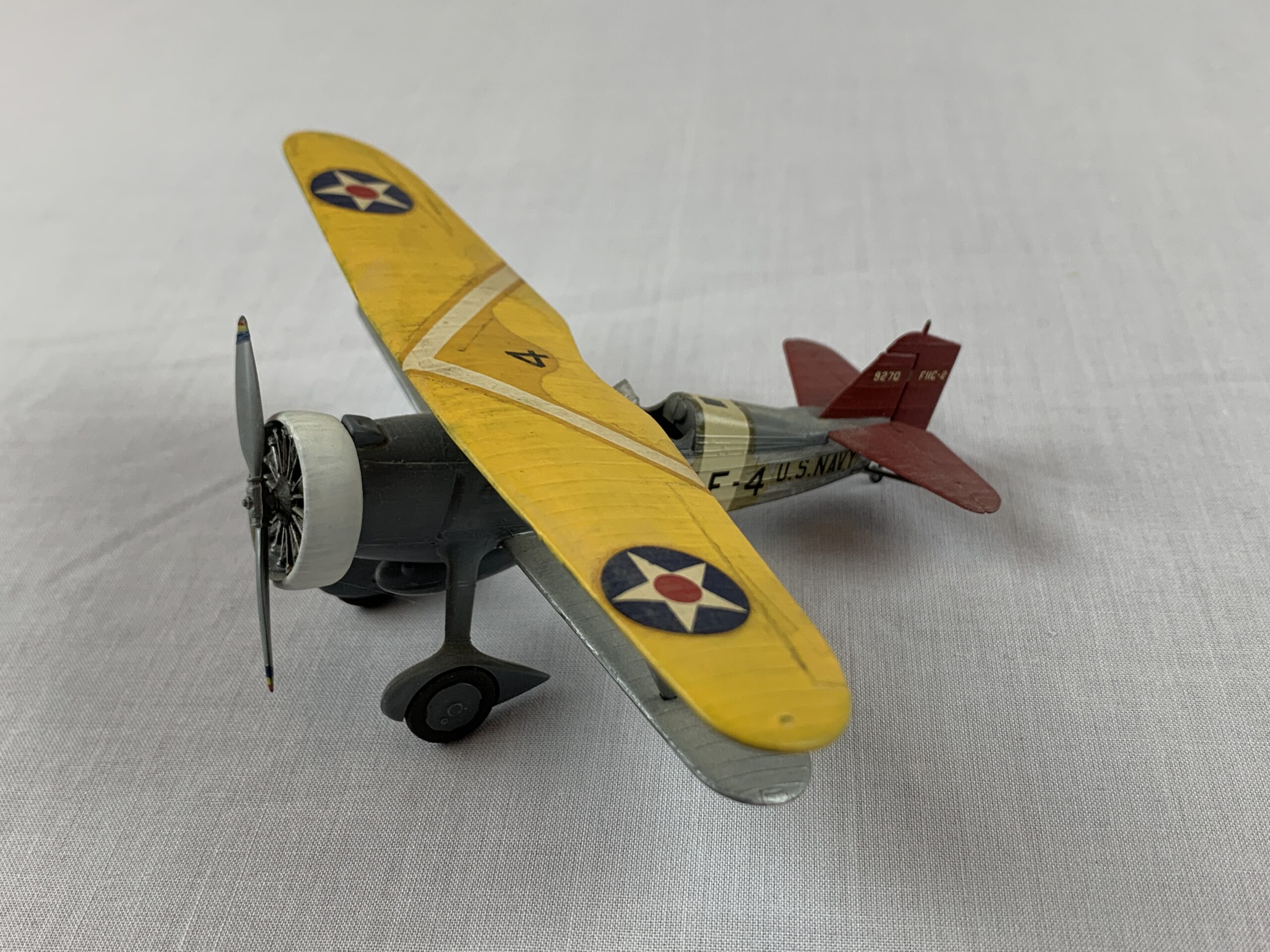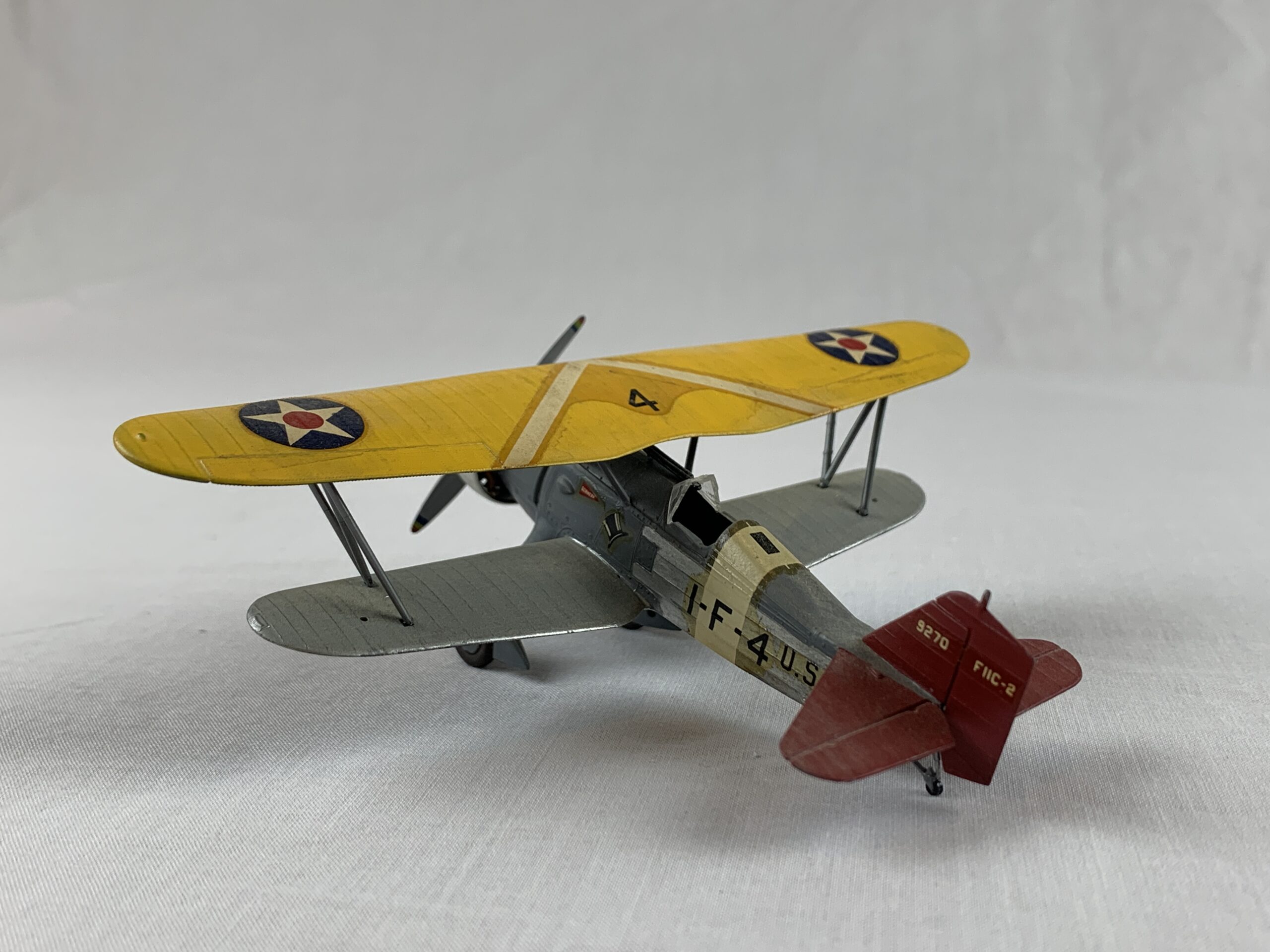Curtiss F11C-2 Goshawk, VF-1B Tophatters, Lt Thomas Combs, USS SARATOGA (CV-3), July 1933
Monogram F11C-2 Goshawk, kit PA210
The Subject
Curtiss was a stalwart in US Naval Aviation between the wars, providing some of their first carrier based fighters as well as scouts, dive bombers, flying boats, and float planes. The F11C was the eleventh fighter model built by Curtiss for the US Navy, beginning with the CR racer of 1921 through the R2C/R3C racing seaplanes for the Pulitzer Trophy Race and Schneider Trophy Race, both in 1925. The F4C was a Curtiss built TS-1 and was the first carrier fighter designed specifically for carrier operations for the US Navy.

The F11C-1 was a natural progression of the Curtiss design philosophy and entered service in 1932 as a fighter, but after service trials the F11C-2 was ordered as a dedicated fighter-bomber. VF-1B (Saratoga) was the initial operator. In 1934 the type was redesigned as BFC-2 recognizing the type change in practice. The Tophatters were the only major unit to operate the type, being renamed VB-2B and then VB-3B.
The Tophatters’ BFC-2 were replaced by the Vought SB2U-1 Vindicator in 1938. VB-6 received their BFC-2 from VB-3B when they were created for the Enterprise, but quickly transitioned to the Douglas SBD-2 Dauntless and did not deploy with the Goshawk.
The Model
While is an ancient kit from the 60’s it still holds up well even by today’s standards. My kit was built when I was a teen in the 70’s and I’d held off simply because biplanes were daunting. It turned out to be quite an easy build and I remember thinking at the time I should do more so began collecting others in the Monogram catalog — the P-6E and F4B-4. Unfortunately these were such good kits they were had to find so it was a few decades later before I finally got these for my stash

Construction was quick, finishing up in an afternoon. I then brush painted using Testors enamels (my stock as a teen) and on Sunday the decals were applied using just water. This was before I’d discovered setting solutions. No varnish as I was unaware that was a thing.
I had no idea how to rig a biplane, nor how it was rigged in real life. The only biplanes I’d seen by that time were crop dusters, specifically the Grumman radial engined AgCat and then only saw them when they dusted the nearby fields, never up close.
Summary
While the cockpit is sparse, with the provided pilot in the seat nothing can be seen anyway. Today you can get a resin cockpit set from Starfighter Decals as well as markings for every F11C-2 bureau number. Mark even sells photo etch rigging for the kit.
I have quite a few more of these kits in the stash, and I’ve finished two more already, using them to learn some rigging methods, and I have 3 more awaiting a batch build.

